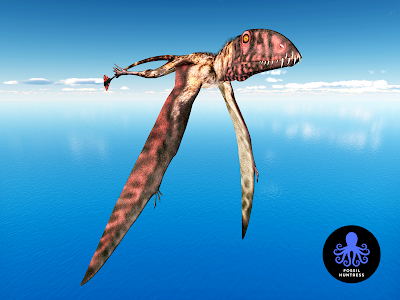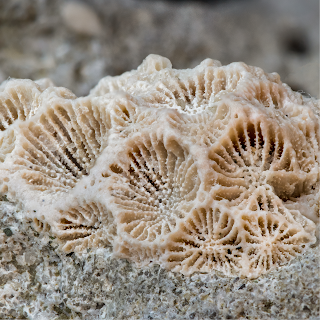If you frequent the eastern coast of North America north of Maine to the western tip of Europe, along the coast of Norway near Svalbard you may have glimpsed one of their chubby, dark silver-grey and white residents.
Hooded seals, Cystophora cristata, are large phocid seals in the family Phocidae, who live in some of the chilliest places on Earth, from 47° to 80° N in latitude.
These skilled divers are mainly concentrated around Bear Island, Norway, Iceland, and northeast Greenland.
In rare cases, we find them in the icy waters in Siberia. They usually dive depths of 600 m (1,968 ft) in search of fishy treats but can go as deep as 1000 m (3,280 ft) when needed. That is deep into the cold, dark depths of our oceans. Sunlight entering the sea may travel as deep as 1,000 m (3,280 ft) under the right conditions, but there is rarely any significant light beyond 200 meters (656 ft). This is the dark zone and the place we find our bioluminescent friends.
Hooded seals have a sparse fossil record. One of the first fossils found was a Pliocene specimen from Anvers, Belgium discovered in 1876. In 1983 a paper was published claiming there were some fossils found in North America thought to be from Cystophora cristata. Of the three accounts, the most creditable discovery was from a sewer excavation in Maine, the northeasternmost U.S. state, known for its rocky coastline, maritime history and nature areas like the granite and spruce islands of Acadia National Park. A scapula and humeri were found among other bones and thought to date to the post-Pleistocene.
Of two other accounts, one was later reassigned to another species and the other left unsolved. (Folkow, et al., 2008; Kovacs and Lavigne, 1986; Ray, 1983)
The seals are typically silver-grey or white in colour, with black spots that vary in size covering most of the body.
Hooded seal pups are known as, Blue-backs as their coats are blue-grey on the back with whitish bellies, though this coat is shed after 14 months of age when the pups moult.
FIRST NATION, INUIT, METIS, MI'KMAQ L'NU
In the Kwak̓wala language of the Kwakwaka'wakw, speakers of Kwak'wala, of the Pacific Northwest, seal are known as migwat — and fur seals are known as x̱a'wa.
Hooded seals live primarily on drifting pack ice and in deep water in the Arctic Ocean and North Atlantic. Although some drift away to warmer regions during the year their best survival rate is in colder climates. They can be found on four distinct areas with pack ice: near Jan Mayen Island, northeast of Iceland; off Labrador and northeastern Newfoundland; the Gulf of St. Lawrence; and the Davis Strait, off midwestern Greenland.
The province of Newfoundland and Labrador is home to the Inuit, the Innu, the Mi'kmaq L'nu and the Southern Inuit of NunatuKavut, formerly the Labrador Inuit-Metis. The Hooded Seals that visit their traditional territory were a welcome source of food and clothing. In Mi'kmaw, the language spoken in Mi'kma'ki, the territory of the Mi'kmaq L'nu, the word for seal is waspu.
HOODED SEAL HABITAT
Males are localized around areas of complex seabeds, such as Baffin Bay, Davis Strait, and the Flemish Cap. Females concentrate their habitat efforts primarily on shelf areas, such as the Labrador Shelf.
Females reach the age of sexual maturity between two and nine years old and it is estimated that most females give birth to their first young at around five years of age. Males reach sexual maturity a little later around four to six years old but often do not mate until much later. Females give birth to one young at a time through March and April. The gestation period is 240 to 250 days.
 |
| Blue-back, Hooded Seal Pup |
During this time the fetus, unlike those of other seals, sheds its lanugo — a covering of fine soft hair that is replaced by thicker pelage — in the uterus.
These young are precocious and at birth are able to move about and swim with ease. They are independent and left to fend for themselves immediately after they have been weaned.
Hooded seals are known to be a highly migratory species that often wander long distances, as far west as Alaska and as far south as the Canary Islands and Guadeloupe.
Prior to the mid-1990s, hooded seal sightings in Maine and the east Atlantic were rare but began increasing in the mid-1990s. From January 1997 to December 1999, a total of 84 recorded sightings of hooded seals occurred in the Gulf of Maine, one in France and one in Portugal.
From 1996 to 2006, five strandings and sightings were noted near the Spanish coasts in the Mediterranean Sea. There is no scientific explanation for the increase in sightings and range of the hooded seal.
Cystophora means "bladder-bearer" in Greek and pays homage to this species' inflatable bladder septum on the heads of adult males. The bladder hangs between the eyes and down over the upper lip in a deflated state.
The hooded seal can inflate a large balloon-like sac from one of its nostrils. This is done by shutting one nostril valve and inflating a membrane, which then protrudes from the other nostril.
I was thinking of Hooded seals when contemplating the nasal bladders of Prosaurolophus maximum, large-headed duckbill dinosaurs, or hadrosaurid, in the ornithischian family Hadrosauridae. Perhaps both species used these bladders in a similar manner — to warn predators and attract mates.
Hooded seals are known for their uniquely elastic nasal cavity located at the top of their head, also known as the hood. Only males possess this display-worthy nasal sac, which they begin to develop around the age of four. The hood begins to inflate as the seal makes its initial breath prior to going underwater. It then begins to repetitively deflate and inflate as the seal is swimming.
The purpose of this is acoustic signaling. It occurs when the seal feels threatened and attempt to ward off hostile species when competing for resources such as food and shelter. It also serves to communicate their health and superior status to both other males and females they are attempting to attract.
In sexually mature males, a pinkish balloon-like nasal membrane comes out of the left nostril to further aid it in attracting a mate. This membrane, when shaken, is able to produce various sounds and calls depending on whether the seal is underwater or on land. Most of these acoustic signals are used in an acoustic situation (about 79%), while about 12% of the signals are used for sexual purposes.
References: Ray, C. 1983. Hooded Seal, Cystophora cristata: Supposed Fossil Records in North America. American Society of Mammalogists, Vol. 64 No. 3: 509-512; Cystophora cristata, Hooded Seal", 2007; "Seal Conservation Society", 2001; Kovacs and Lavigne, 1986.
Mi'kmaq Online Dictionary: https://www.mikmaqonline.org/servlet/dictionaryFrameSet.html?method=showCategory&arg0=animal















.png)



















